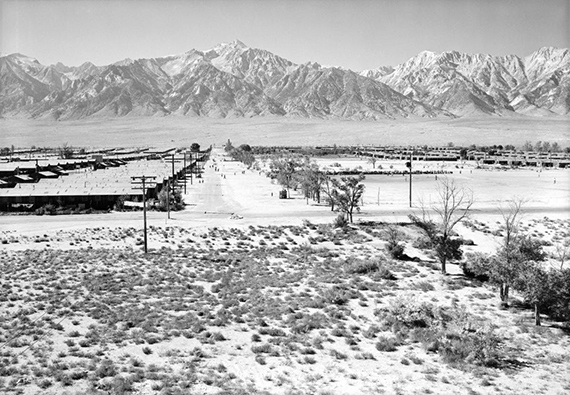
Rich Land, Poor Land
Ansel Adams » Michael Ashkin » Ilana Harris-Babou » Nancy Holt » Dorothea Lange » Arthur Rothstein » Robert Smithson » & others
Exhibition: 29 May – 27 Jul 2025
Thu 29 May 18:00
carriage trade
277 Grand Street, 2nd fl.
NY 10002 New York
+1 718-4830815
info@carriagetrade.org
carriagetrade.org
Wed-Sat 13-18
Center for Land Use Interpretation, Jane Crawford and Robert Fiore, Yiyao Tang, The Yes Men
The story goes that an old Nebraska farmer was sitting on his porch during a dust storm. Asked what he was watching so intently, he replied: “I’m counting the Kansas farms as they go by.”
Stuart Chase, Rich Land, Poor Land, a Study of Waste in the Natural Resources of America, 1936
Sometimes you get these late-civilization vibes [that the] apocalypse could come along at any moment. Here at Tesla, we have the best in apocalypse technology.
Elon Musk, 2023
The forces of destruction are suddenly everywhere. Looming but long held at bay through jury rigging and sleights of hand that appeared to sustain an "our way of life" long envied by the world, media coverage of growing societal tensions suggested the country's problem was little more than a divided majority in need of repair. Claiming these tensions were limited to cultural differences within an otherwise functioning democracy, the gradual dissolution of our way of life for many of those on the lower end of the economic divide received little attention.
The "land of opportunity" narrative, ever reliant on the latent power of the expansionist ethos of Manifest Destiny, projects an image of a society where there is plenty for all. The skies here are always bluer, the mountains higher. America's exceptionalism proved itself through scale. Pushing westward with the confidence that all in sight was there for the taking, the land was synonymous with pillage for many, with glorious depictions by artists retroactively assigning a kind of spiritual justification for the unlimited natural resources magically transformed into material wealth.
Focusing on the politics of landscape and land use, this exhibition takes as its reference point Stuart Chases' 1936 land use study
Rich Land, Poor Land, a Study of Waste in the Natural Resources of America
. Written not long after the environmental devastation of the Dust Bowl,
Rich Land, Poor Land
argues for a respect for natural processes and resources, which are often ignored at society's peril. Updating these concerns to our contemporary moment, the exhibition will explore connections between landscape as symbolic of bounty for the many, contrasted with the often brutal expropriation of its resources and occupants on behalf of the few.